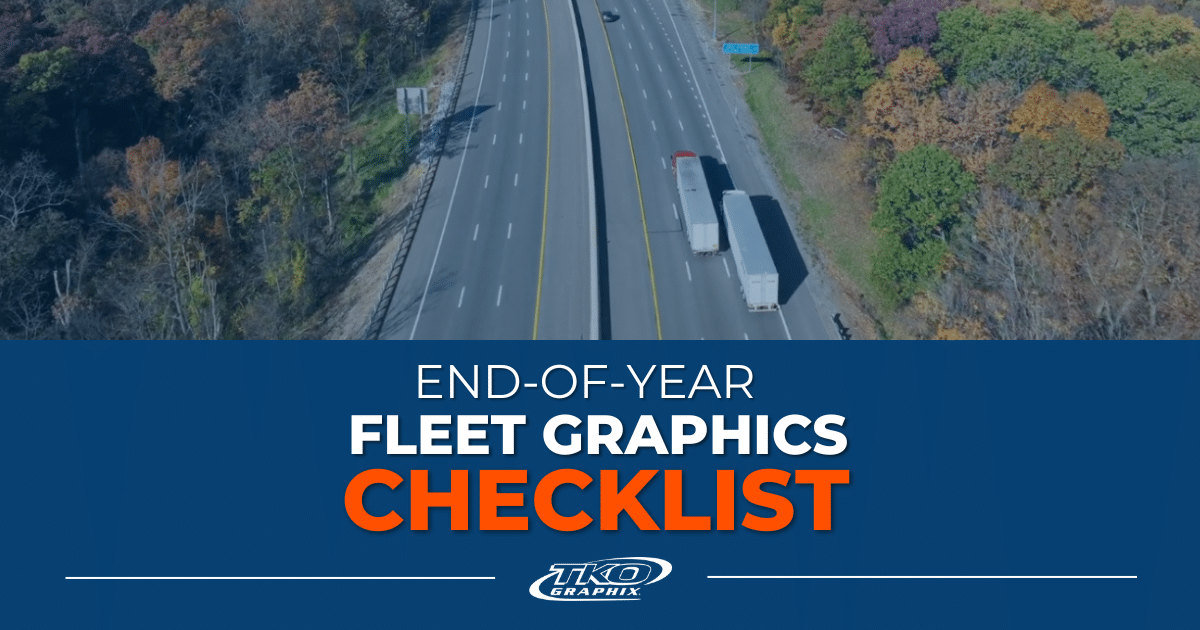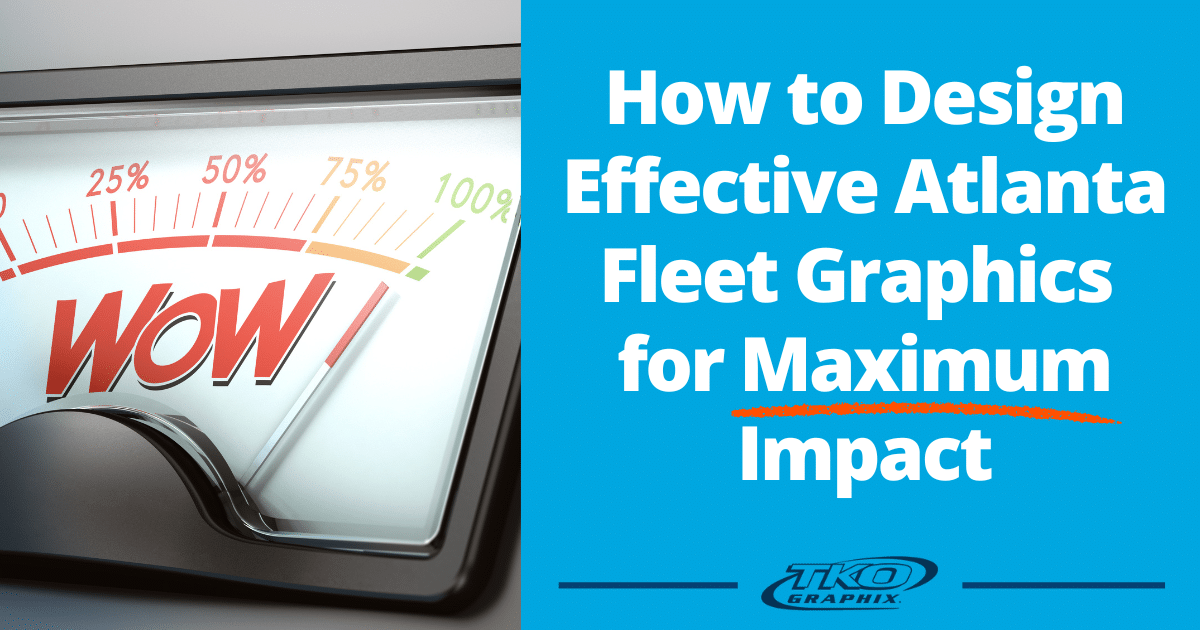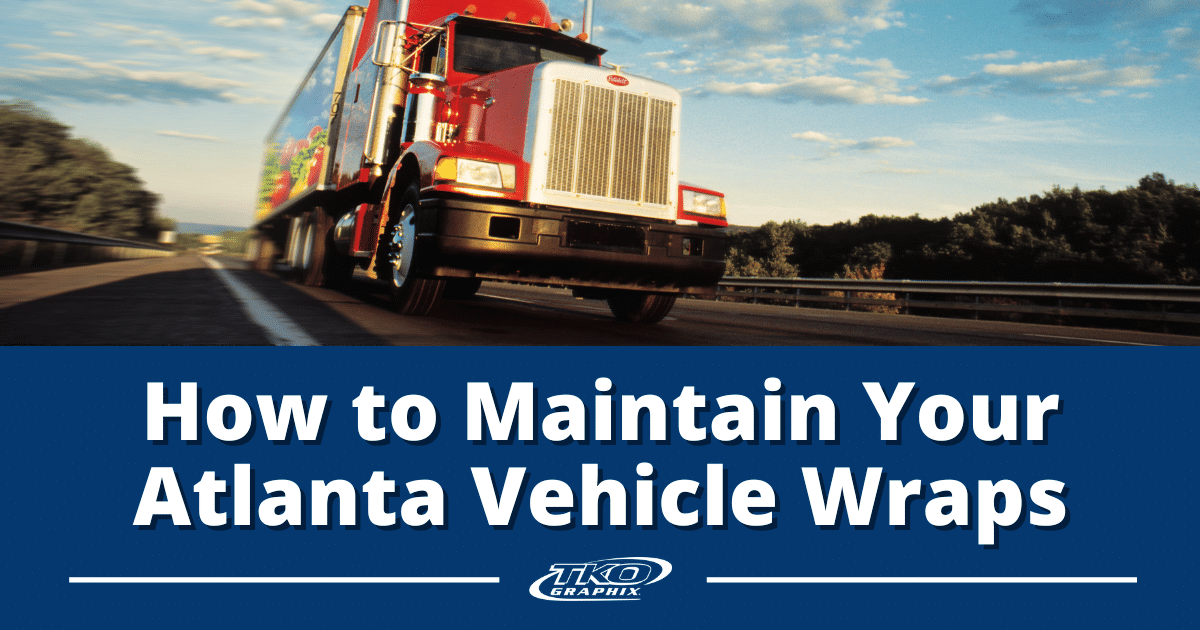You can wrap your fleet vehicle, but to do it properly, it will take time, planning, and patience. How to wrap your fleet vehicles begins with how not to wrap your cars and trucks. Most vehicle graphics providers can share stories of the unprepared attempting to DIY wrap a fleet of vehicles that didn’t turn out so good. Unfortunately, the stories begin after the vehicles have been damaged and the owner wants the provider to fix them.
“We might not recommend you attempt to wrap a vehicle, but could you? Yes, however, to do so correctly, takes time, planning, and patience. We can share story after story of DIY (Do it yourself) vehicle graphic installations that we’ve been asked to “fix”. Many of these, do it yourself attempts, damaged the vehicles surface, by improper cutting, use of the wrong materials, or inadequate preparation.” — FAQ: Can I Wrap a Vehicle Myself?
You and your team can do this yourself, but take your time, follow the steps below, and contact us on what material is best for your application.
How to Wrap Your Fleet Vehicles
• Clean and dry the vehicle, removing all grease and film. Clean all hard to reach areas, and remember — leaving the smallest amount of dirt and debris may lead to the vinyl not adhering properly.
• Prime the vehicle. Most people are unaware of the need to apply a primer designed for this application, such as 3M Adhesive Products. Be sure to apply the primer in all the nooks and crannies.
• Detach equipment like side view mirrors, moldings, light casings, and trim.
• Check placement and measurements. Be certain all components of the wrap match up properly. Take your time. Remember the old saying, “measure twice, cut once.”
• Use a squeegee to apply the graphic. They’re readily available such as these Avery squeegees. Use smooth strokes to eliminate all creases and bubbles.
• Use a razor to cut away excess vinyl. However, be careful not to slice into the vehicle.
• Apply heat judiciously to help smooth the vinyl over complicated angles and curves. A small torch or lighter may be used by fanning the flame over the area for a few seconds. Do not hold the heat too long in one spot or use it on glass and plastic.
• Use a razor or Xacto knife to cut around rivets and bolts.
What Not to Do
Here’s the other side of the coin. What to avoid. It may be more important to know what not to do than to understand how to do it when it comes to fleet graphics installation. How to wrap your fleet vehicles begins with how not to do it. Breaking any of these don’ts can lead to problems, headaches, and unnecessary costs. Please take the time to click any link if you’re uncertain of how to proceed.
Don’t install when it’s too hot, too cold, or too humid
“Graphics installation requires a clean and warm environment. When temperatures drop too low, vehicle graphics fail. Installing adhesive vinyl graphics below 60 degrees Fahrenheit leads to problems.” — FAQ: Can Vehicle Graphics be installed in the Cold?
Most adhesive vinyl suppliers recommend installation at a minimum of 70 degrees and no more than 50 % humidity. “Bringing an installation crew, tools, and materials to an outdoor lot in winter can be a costly mistake.” — Graphics Mistakes Fleet Managers Learn to Avoid.
Don’t ignore the substrate
“I saw a blog post the other day comparing painting a vehicle to wrapping a car or truck. The image on the post showed a severely rusted van being wrapped to look brand new. This is misleading. False promises such as this could give the vehicle graphics industry a bad name. Covering damage with vinyl doesn’t repair the damage; it only hides it for a short time. It won’t be long before the adhesive vinyl will not adhere to the rust. Surface damage should be repaired before applying graphics. Graphics don’t hide dents or adhere to rust.” Can Vehicle Graphics be applied over Body Damage?
Don’t forget to prep the surface
The surface of any vehicle must be completely cleaned and dried before graphic installation. Surface dirt, grime, solvents, or petroleum product residue can cause the adhesive to fail and the vinyl to bubble or come loose.
“Surfaces must be finished, clean, and dry. Organics, such as, animal and insect remains, food particles, and plant material, in most cases, may be removed with mild soap and water. Solvents may be needed to remove petro-chemicals, for example, wax, oil, or diesel. Understanding how solvents affect the material and following directions on the label will help prevent surface preparation failures.” — Vehicle Graphics Surface Preparation.
The surface must be completely clean and dry. It can’t have any grease, oil, or chemicals. Some solvents may be unseen by the naked eye yet will adversely affect how the adhesive vinyl sticks to the substrate.
“Don’t be tempted to skip this step. Any oil, grease, dust or waxy residues left on the surface will seriously affect the holding power of the film’s adhesive.” — 3M Vehicle Wrap Installation
Do remove equipment
If you’ve ever painted the interior of a home you’ve most likely removed light switches, socket covers, and wall hangings. So, think of applying adhesive vinyl graphics to a vehicle like painting an interior room – it’s best to remove the outlets and fixtures, rather than trying to paint around them. If you’ve tried to paint the kitchen, and left the fixtures in place, you learned that painting around them left something to be desired. It’s the same with vehicle graphics, equipment that can be removed such as, mirrors and license plates should be removed.
Know what tools to use and how to use them
“Using tools improperly can lead to disaster. Anyone can use a squeegee to apply adhesive vinyl to a surface, but there’s a right way and a wrong way. The wrong way will cause problems. Same goes for using heat or working around rivets, windows, doors, and equipment. We recommend using providers that are certified by PDAA (Professional Decal Application Alliance), which is administered by SGIA (Specialty Graphics Imaging Association), or UASG (United Application Standards Group), through 3M. TKO Graphix has both. You may be able to get away with using a credit card instead of a squeegee on a small decal. Very small. But not on a full or partial wrap. Use the right tools for the job.” — How Not to Install Vehicle Graphics
Start Small, Take Your Time
Another option that may be best suited for a beginner is to install decals, rather than an entire wrap. Decals can be very effective and attractive. By strategically placing decals on flat surfaces of a vehicle, you can avoid removing equipment, cutting around protuberances, and using heat around curves.
“Every vehicle graphic doesn’t need to be a full wrap. Partial wraps and plotter cut decals are often just as effective as a full wrap, and they’re less expensive. Decals use less materials, print quicker, and take less time to install than a full wrap. Time and material cost dollars.” — 7 Ways to Save Money on Vehicle Graphics
The Question isn’t
How to Wrap Your Fleet Vehicles, but should You?
So, should you DIY wrap your fleet vehicles? Are you ready to apply vinyl graphics on your cars and trucks? It’s not rocket science, but it will take some thought, preparation, and time. And it’s not something to rush. It’s artwork and it’s being applied to one of your largest investments – your vehicles. If you’d like to learn more, or if you decide NOT to risk a DIY mistake that can cause costly damage to the surface of your cars and trucks, Contact Us.
Fleet graphics can be a work of art. Your truck is the canvas – we supply the medium.
Here’s a helpful video from 3M about wrapping a vehicle.








Designing a vehicle wrap can be seen from here Vehichle wrapping